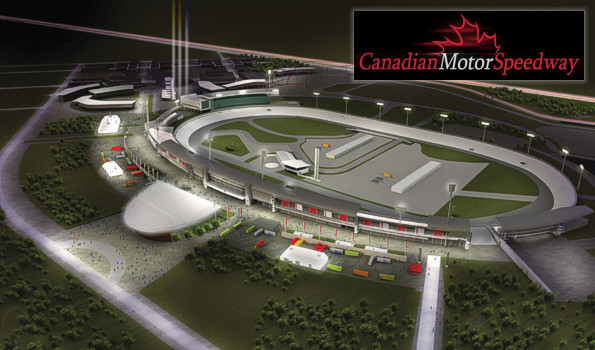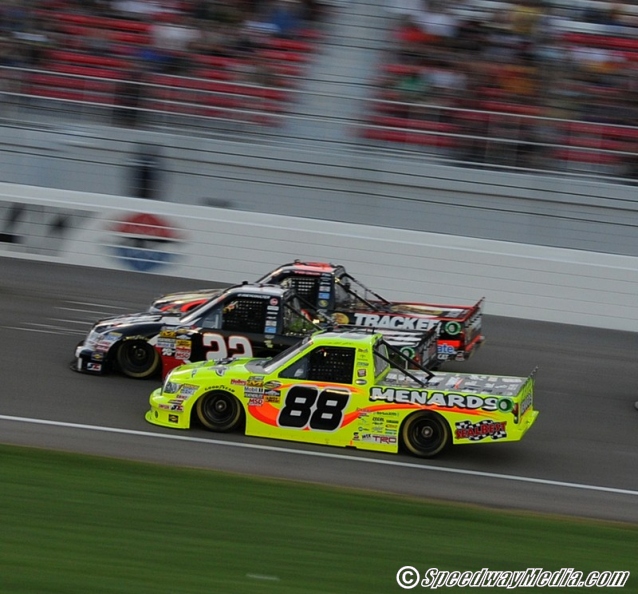
After thirty hours of rain delay and one colossal jet dryer flame out during last year’s Daytona 500, NASCAR vowed to find a new way to dry wet race tracks.
And they have done just that, unveiling the new Air Titan, which will not only dry tracks quicker but also help ensure that NASCAR will be singing in the rain if it happens to interrupt this year’s Daytona Speed Weeks festivities.
“NASCAR is really excited to officially introduce our track-drying technology, which we are naming NASCAR’s Air Titan,” Steve O’Donnell, NASCAR senior vice president of racing operations, said. “Having the first Daytona 500 rained out certainly put more of an emphasis on the importance for the fans attending and those watching.”
“Everyone knows the time it takes to dry a track and the impact it’s had on our fans attending an event and those watching us on television is really the main reason our chairman Brian France tasked the folks at the R & D Center to come up with a solution to reduce drying time,” O’Donnell said. “And what we look at is an 18 to 24 month process to get us to Phase 1, where we were able to design, develop and test the Air Titan and have it ready for Speedweeks in Daytona.”
“It’s been a thoroughly-tested scientific process.”
O’Donnell advised that the ultimate goal of Air Titan is to reduce the track drying time by 80 percent or down to about thirty minutes. And its first true test may be if the rains come at anytime in the next two weeks at Daytona International Speedway.
So, how will this new Air Titan help NASCAR sing, instead of sigh, in the rain?
“We’ll have basically two sets of identical equipment on opposite sides of the track that will move in the same direction and do one complete pass of the race track,” O’Donnell said. “The system basically works by having compressors feed air at a high rate of speed through a hose to the Air Titan modules.”
“The Air Titan is able to blow air in narrow, highly pressurized sheets over the race surface down onto the apron,” O’Donnell continued. “Then on the apron we’ve got a regenerative air vacuum truck, which obviously absorbs the water.”
“And then we’ll have jet dryers behind each cycle, we’ll have five of those, that will move at a rate of speed of approximately 3 to 5 miles per hour.”
O’Donnell admitted that this new Air Titan technology is brand spanking new and will really be put to the test at Daytona before being rolled out at other tracks.
“Daytona will really give us the first chance for us to see it work,” O’Donnell said. “Speedweeks historically has a lot of product on the track.”
“So we’re going to use this as a test,” O’Donnell continued. “We’ve still got some work to do there for the other tracks, so we’ll look at options in the future, but Daytona will just be Phase 1.”
O’Donnell also admitted that powering the new Air Titan might just be one of NASCAR’s most significant challenges, especially given its green commitment.
“We’ve still got some work to do from powering the Air Titan,” O’Donnell said. “There’s still some challenges there and some logistical challenges depending on where we’re racing.”
“I think we’re able to power it right now, but you’ll see how many air compressors it takes to power the Air Titan,” O’Donnell continued. “When you see the air compressors, there are a number of them.”
“We’re going to have 17 of them out on the track,” O’Donnell said. “We have to look at how do we reduce that, how do we look at how they’re powered, are there greener technologies we can use.”
“So we’re really excited about actually having the Air Titan out there and the fact that it works and excited to now just focus on that power aspect of it moving forward.”
While NASCAR knows this is groundbreaking technology when it comes to track drying, O’Donnell also acknowledged that jet dryers and other equipment will still be needed, at least in the short term. But in the long term, jet dryers may be singing in the rain at junk yards instead of race tracks.
“I think the way the system was developed really for Phase 1 was in combination of what exists today, i.e., jet dryers, vacuums, the Air Titan, and using a combination of all of those to have the most efficient means possible to dry the track,” O’Donnell said. “I think moving forward would we love to have an all-in all in one system?”
“Absolutely, that’s the ultimate goal if we can get there.”
“I think if everything works where we see it going in the future, you could see jet dryers being a thing of the past,” O’Donnell said. “You could see that model where the tracks have gone out and purchased jet dryers that they now are purchasing the Air Titans and having their own air supply at each track because obviously they host more than just NASCAR events.”
“So I think that model that’s existed in the past will continue; we’ve just got to work through some of those things to get it where it needs to be.”
While NASCAR may be singing in the rain over its new innovation, the main focus of the leadership of the sport is to get the fans singing as well in spite of any rain. And to also get the television broadcasters and the sponsors signing in the rain will be the ultimate goal.
“When fans come to the racetrack, they’ve invested a significant amount of time and money to come to a race, and understanding now that they may have the opportunity to see that race happen that day we think is huge for the industry,” O’Donnell said. “We also think it’s huge for our television partners.”
“We know that when a red flag comes out, that’s a challenge, and so speeding up any downtime we think is a win-win for the entire industry, the tracks, the drivers, the race teams, the fans,” O’Donnell continued. “That’s the goal is to get this down to as short a time as possible, and if we do that, we think it’s a benefit to the entire industry.”
“We know it’s imperative for us to innovate every day,” O’Donnell said. “One of those is the Air Titan.”
“At the end of the day we feel like we’ve got the best story to tell.”
So, thanks to the new Air Titan, let the stormy clouds chase everyone from the place, NASCAR has a smile on its face because they are just singin’, singin’ in the rain.







